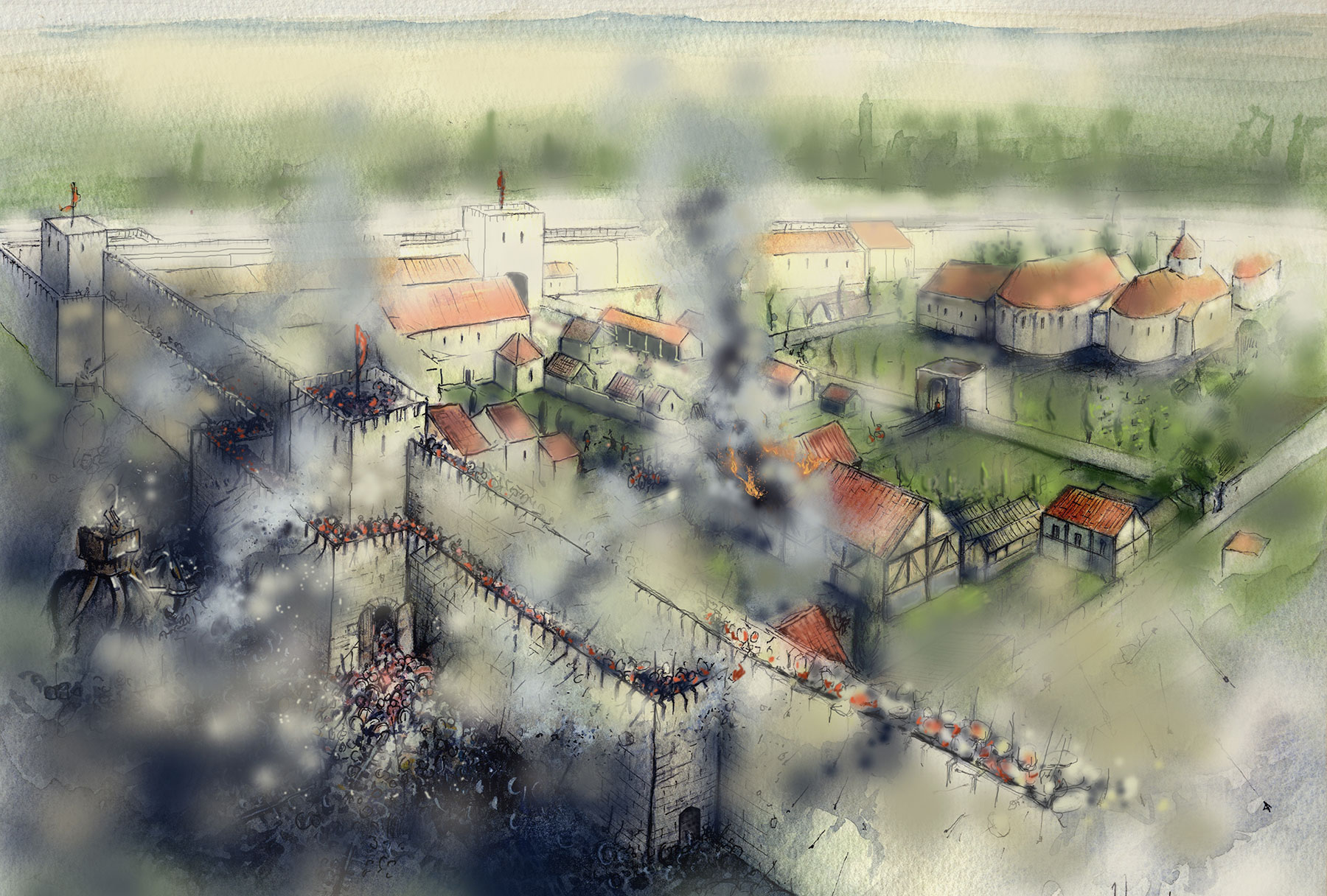Anglo-Georgian Expedition to Nokalakevi, Georgia
A collaborative project investigating an ancient fortification in the land of the Golden Fleece.

About the project
Nestled by the picturesque river Tekhuri, on the northern edge of the Colchian plain in Samegrelo, western Georgia, lie the impressive ruins of Nokalakevi. Occupying some 20ha, the site was known to early Byzantine historians as Archaeopolis, and to the neighbouring Georgian (Kartlian) chroniclers as Tsikhegoji. The fortress is located 15km from the modern town of Senaki and would have commanded an important crossing point of the river Tekhuri, at the junction with a valuable strategic route.
The early Byzantine defensive fortifications of Nokalakevi-Archaeopolis take advantage of the site's position within a loop of the river Tekhuri, which has carved a gorge through the local limestone. The steep and rugged terrain to the north of the site made the citadel almost unassailable. Excavations have revealed substantial stone buildings dating to the fourth to sixth centuries AD. Beneath these late Roman-period layers there is evidence of several earlier phases of occupation and abandonment, from the eighth to the second centuries BC.
Formed in 2001 as a collaborative research project, the Anglo-Georgian Expedition has trained more than 100 Georgian and British archaeology students in modern excavation and recording techniques. Dr Everill, who has been Co-Director of the expedition to Nokalakevi since 2002, is responsible for managing the excavation strategy and the training element.
Investigation history
In 1833-34, Swiss philologist Frédéric Dubois de Montpéreux identified the ruins as the Archaeopolis of Byzantine historians and argued that the site was Aia, the ancient Colchian capital of the Greek myth of Jason and the Argonauts. A century later, a joint German-Georgian team carried out the first excavations. Their findings, including an impressive hoard of late 6th to early 7th-century gold solidi, confirmed Dubois de Montpéreux's identification of the site with Archaeopolis, without settling the question of Aia. Most scholars continued (and continue) to prefer the traditional identification of Aia with Kutaisi.
The political upheavals of the 1930s and the onset of war interrupted further investigation. Nevertheless interest in Georgia's history continued to grow, prompting various scholarly visits and articles about Nokalakevi from the 1930s to the 1960s. Finally in 1973 a major state-sponsored expedition was set up, which undertook major excavations and conservation work at Nokalakevi until the early 1990s, when the collapse of the Soviet Union and the civil disturbances of Georgia's early years of independence caused funding to be stopped and which inflicted serious damage to the expedition's infrastructure.
Large-scale excavations were resumed in 2001 with a collaborative project, headed by Professor David Lomitashvili, of the S. Janashia State History Museum (now the Georgian National Museum) and the newly formed Anglo-Georgian Expedition to Nokalakevi (AGEN).
In 2009 the British Ambassador to Georgia at the time, Denis Keefe, praised the UK team for helping to strengthen international ties, following the recent outbreak of war in the country. Over the past few years the Ambassador has been a regular visitor at Nokalakevi.
Archaeology for wellbeing: Nokalakevi and the Heritage for Heroes project
As part of its commitment to supporting British military service personnel, veterans and their families, the University of Winchester offers studentships to military veterans. The Archaeology team is at the forefront of this initiative and in 2016, we welcomed the first cohort of Heritage for Heroes students on undergraduate courses in Archaeology. In summer 2017, three veteran studentship-holders joined Dr Everill's Nokalakevi project, working alongside other students as well as Georgian veterans. In 2019 a total of 12 veterans lived and worked in Nokalakevi alongside Georgian, British and American staff and students. Find out more about the Heritage for Heroes project.
Research team
- Head of Expedition: Professor David Lomitashvili, Georgian National Museum, Tblisi
- Co-Director: Dr Paul Everill, Senior Lecturer in Applied Archaeological Techniques
Further information
For more information, visit the expedition website, follow the project on Facebook or read the latest publications:
- Everill, P. et al. (2018) Bringing methodology to the fore: The Anglo-Georgian Expedition to Nokalakevi. Ancient West and East Vol. 17.
- Everill, P. et al. (2017) The lost fortress of Onoguris? Newly discovered sixth-century AD fortifications at Khuntsistsikhe, western Georgia. Antiquity Vol. 91 Issue 365.
- Everill, P. (Ed.) 2014. Nokalakevi Tsikhegoji Archaeopolis: Archaeological excavations 2001-10. Anglo-Georgian Expedition to Nokalakevi. BAR International Series 2612. Oxford, Archaeopress
- Everill et al. 2010, Nokalakevi-Archaeopolis: ten years of Anglo-Georgian collaboration. Antiquity 84 (326)
